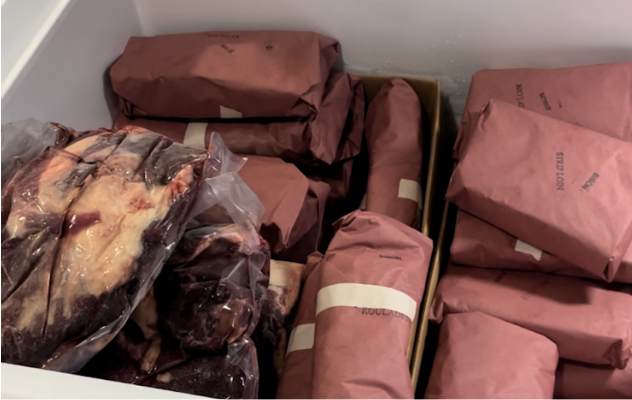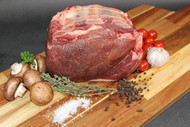Understanding the Process of Buying Animals in Wholes, Halves or Quarters
Posted by Kale Seguin on 5th Apr 2023
Buying meat in bulk from a local producer is the most cost-effective way to get large quantities of high-quality meat. Sometimes, the process and certain terminology can prevent people from saving money by buying in bulk. In this article, you will learn everything you need to know about purchasing high-quality protein in bulk.
How Does it Save Money?
It is by far the most cost-effective method of purchasing our bison meat. Typically, when purchasing meat from a store, the cost is determined by the type of cut. For example, our ground bison is typically sold around $12/lb while a sirloin steak can be upwards of $25/lb. When purchasing in bulk, all the meat is sold at a constant per pound cost. This means you will be paying less for premium cuts that are typically sold at a much higher price. When we sell animals in wholes, halves, or quarters, the price is determined by the HHW.
What is HHW?

HHW stands for hot hanging weight. This is the weight of the carcass after the organs and hide have been removed. The weight of the carcass (HHW) is the weight that we use to calculate the sale price. After a 2-week hanging process to tenderize the meat, the carcass is then broken down into portions and different cuts. Usually, 55%-60% of the carcass is edible while the rest is bones and connective tissue. For example, a 600 lb carcass, aka 600 lb HHW, would yield approximately 330 lbs of meat in your freezer.
600 (HHW) x 0.55 (55% yield) = 330 lbs
What's a Whole, Half, or Quarter?
Simply put, it is the amount of an animal you will be purchasing. Using the example above, purchasing a whole would result in 330 lbs of meat, a half 165 lbs, and a quarter would be 82.5 lbs.
How do I Choose my Cuts?
After your deposit is received, you will be given a cut sheet. A cut sheet is a guide the butcher uses to customize the types of cuts to the customer. If you need assistance, we can help guide you through the cut sheet to ensure you are receiving the meat to your liking. If desired, you can also get soup bones and organs from your animal. It is also important to consider certain products have an extra processing fee. For example it costs a little bit extra to get some pre-made patties or smokies made. All extra costs are explained in the cut sheet.
How Much Freezer Space do I Need?

1 cubic foot can fit approximately 30 lbs of frozen meat. Here are some rough estimates of freezer space needed:
Whole (275 lbs - 385 lbs).......................................................................................9 - 13 cu ft
Half (137 lbs - 193 lbs).......................................................................................4.5 - 6.5 cu ft
Quarter (68 lbs - 97 lbs)...........................................................................................3 - 4 cu ft
The size of the animal butchered will determine the amount of meat received. It is also important to consider that soup bones and organs will take additional space.
What is the Ordering Process?
You can place a pre-order for your whole, half, or quarter here! A deposit is required for a pre-order because booking an animal's butcher date has to be done months in advance. Once your deposit is received, you will be contacted to discuss when you can expect your meat and how/where to pick it up.

In conclusion, purchasing bison meat locally in bulk offers numerous benefits. Firstly, it is more cost effective as it allows consumers to take advantage of bulk discounts and lower overall costs compared to buying smaller quantities. Secondly, buying local, sustainably raised bison meat supports local family farms and promotes sustainable farming practices, contributing to the well-being of the local economy and environment. By choosing to purchase bison meat in bulk from local, sustainable sources, consumers can enjoy the advantages of cost savings and sustainable food choices. Additionally, it fosters a stronger connection between consumers and their local food system, promoting a healthier and more sustainable way of living. If you want to learn more about our farm check out our About Us page.

